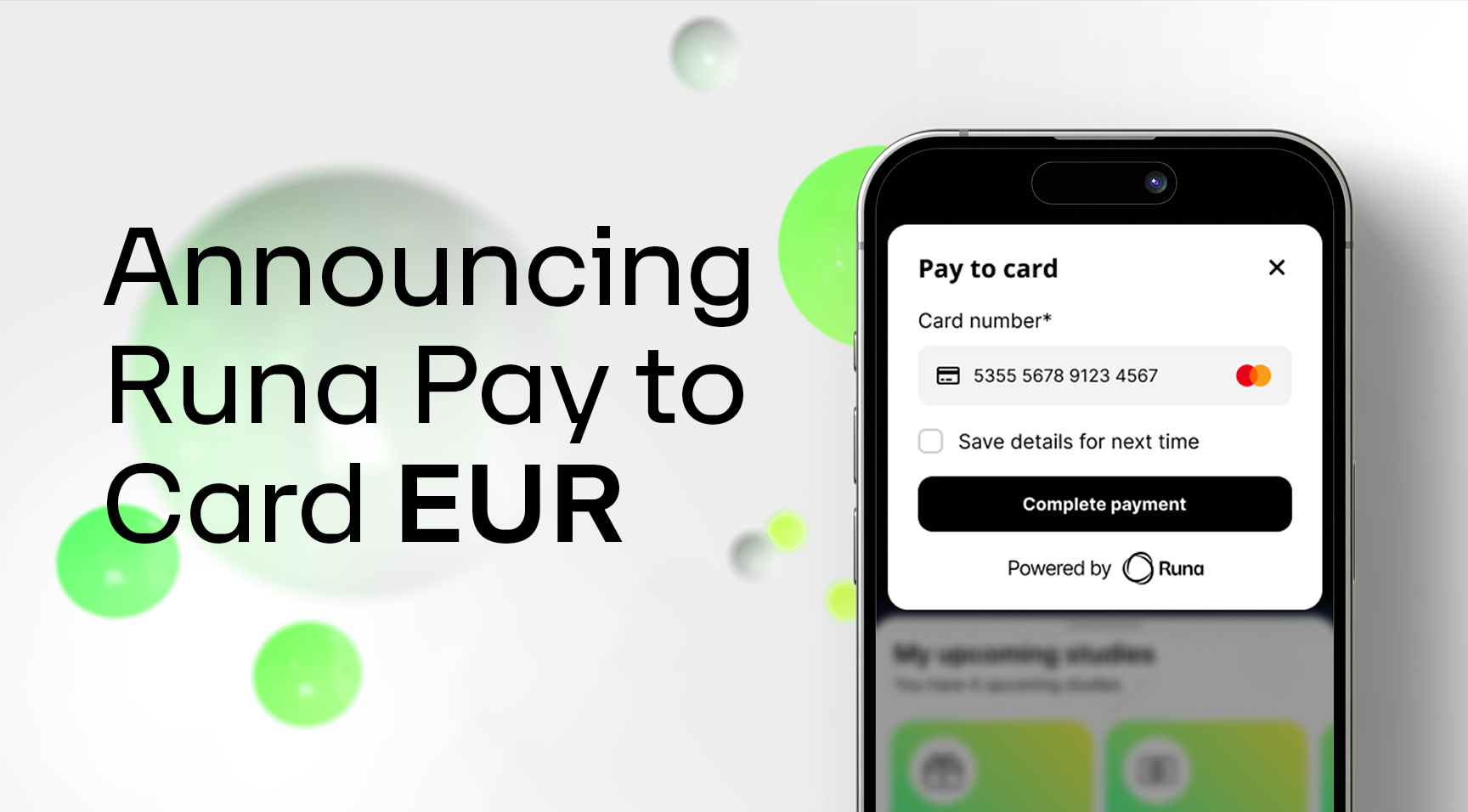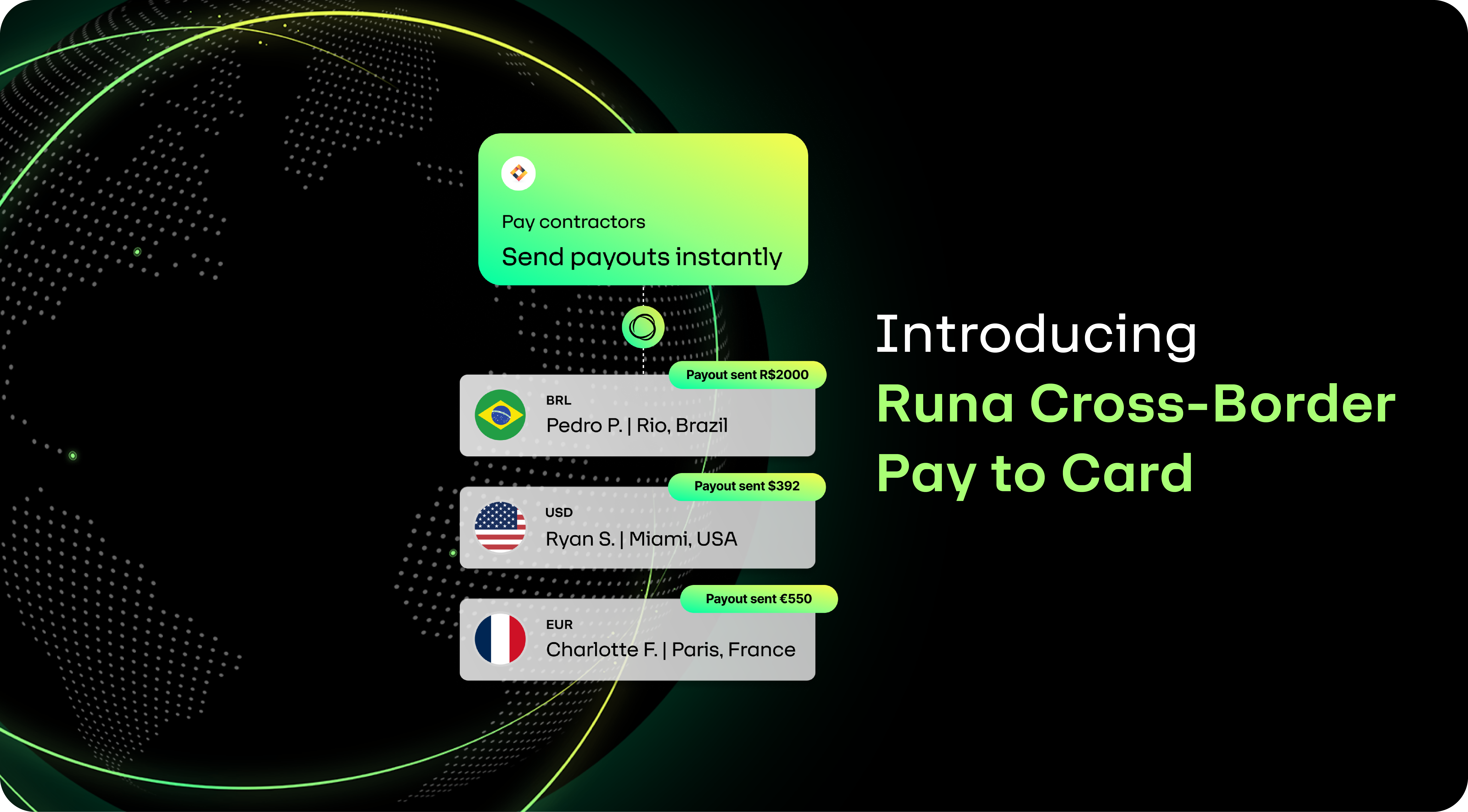In the dynamic world of digital payouts and rewards, staying ahead means embracing change and leveraging best-in-class technology. Migrating your application to the Runa API is a step towards unlocking new efficiencies, enhanced reliability, and a superior experience for both your business and your recipients.
We're here to guide you through our effortless migration process. Check out this video tutorial with Runa expert and Engineering Lead, Will.
The Runa API Advantage
The Runa API brings significant improvements to your payout processes. Here’s what you gain:
- Lightning-fast ordering: Experience faster responses with the capability to process 500 instantaneous payouts to recipients, boosting their satisfaction and loyalty.
- Consistent reliability at scale: With an industry-leading 99.999% uptime, Runa API offers dependable performance for your business.
- Access new markets: As we continually invest in API enhancements, access new features, currencies, and global regions to expand your reach with diverse payout options.
Your Simplified Guide to Runa API
This video aims to share with you everything you need to know before migration.
1. Understanding the API differences:
- Connect vs Runa API: The Runa API supports both synchronous and asynchronous modes, allowing up to 500 items in a single order compared to Connect's single-item limit.
- Key Management: Runa API offers multiple API keys per account with the ability to revoke them as needed, providing enhanced security and flexibility.
- Ease of Ordering: With the Runa API, ordering payout links is simplified – no need for pre-created templates.
2. Selecting your ordering mode:
- Synchronous mode: Ideal for simple integrations requiring a single order item.
- Asynchronous mode: Best for event-based flows or large number of items in an order.
3. Getting started:
- API key creation: Generate a new key and comply with security requirements.
- Set up the base URL: Choose the appropriate base URL for your requests, depending on your testing and production needs.
4. Making your first API request:
- Retrieving product lists: Write a function to pull product information based on country code
- Creating orders: Develop a function for placing orders, including payment methods and order items.
5. Error handling and idempotency:
- Managing errors: Implement error handling for common issues like validation errors or network issues.
- Idempotency for reliability: Use idempotency keys to prevent duplicate orders in case of re-sending requests.
6. Testing and launch:
- Test your integration: Use the Runa Playground to build and test your API integration in our risk-free environment.
- Transitioning to live environment: Move to the production environment after ensuring all configurations are correct and ready for actual orders.
Need help? We’ve got you covered
Migrating to the Runa API is a step towards future-proofing your payout and rewards. With easy integration, expanding global reach, and a growing network of diverse payout options, we're well-equipped to meet the evolving needs of your business.
If you have questions or need assistance during your migration, please contact us at migration@runa.io . Our team is ready to support you every step of the way.
.png?width=864&height=473&name=Runa-youtube-thumbnail-api-migration%20(1).png)


